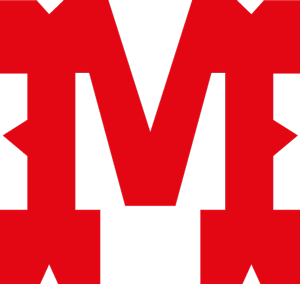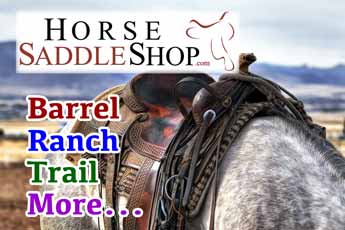How To Take Horse Pictures - Page 2 of 2
A few more examples and information on how to take better pictures of horses.
No Clutter
Make sure the background of the photo is clean and uncluttered (this includes shadows). Your horse should dominate the photograph, with little or nothing to distract the eye. Most often a "bland" background is a good background.
If your background is distracting, move the horse, change your angle, etc.
Below: The other horses in the background add a cluttered look to this photo.
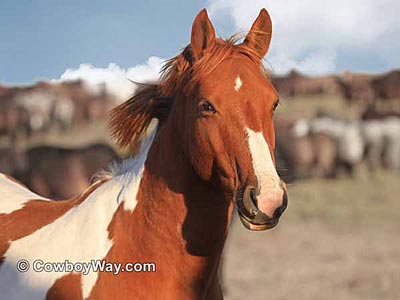
Below: In this photo the eye is drawn to the horse without being distracted by objects in the background.
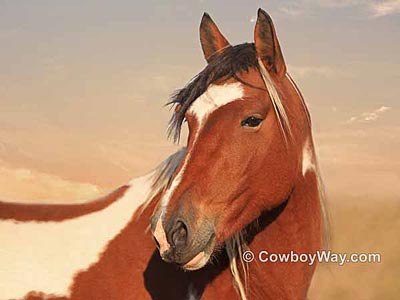
Center, Off Center, Or Rule Of Thirds
In some cases a horse centered in the photo can make a very pleasing picture. However, off-center framing can be perfect for some shots.
For example, capturing a bronc at a rodeo in a moment of exciting action, a little offside so you can see the reaction of the crowd in the stands, may make a good picture even better.
The Rule Of Thirds
In addition, using the "rule of thirds" when composing your image can also make pleasing photos. In fact, the rule of thirds is a favorite technique frequently used by photographers.
So, what is the rule of thirds?
In photography, the rule of thirds divides the photo into 3 equal sections both horizontally and vertically. According to the rule, the human eye is naturally drawn to the imaginary lines that make up these sections. This is a LOT simpler than it sounds! See the image below.
In addition, the places where the imaginary lines intersect create areas that are particularly powerful in drawing the viewers attention. These are often called "power points."
Below: The red lines illustrate the imaginary lines that make up the rule of thirds. The small circles illustrate where the lines intersect, aka the power points.
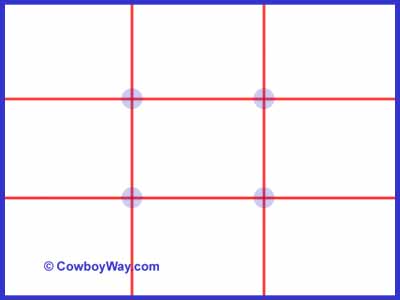
According to the rule of thirds, the human eye is naturally drawn to objects that fall along the imaginary lines or at the power points.
Below is a photo of a filly with the imaginary rule of thirds lines superimposed on top. Note that her topline follows along the top imaginary line, and that her face falls at a power point.
Below: A photo composed using the rule of thirds.
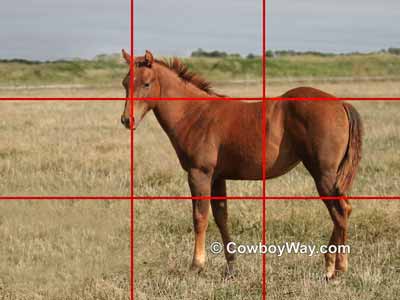
The rule of thirds is so popular in photography that many digital cameras have a set of gridlines representing the rule that can be turned so you can seem them when you are composing your photo.
In addition, many photo editing software products have a rule of thirds gridline that you can turn on and use when cropping your photos.
The Rule Of Thirds Is Great, But...
Rules are meant to be broken. As much as we love the rule of thirds there are times it just doesn't work for a photo.
In addition, the photographer is free, creatively and artistically, to compose a photo any way they choose. It helps many of us to keep the rule of thirds in mind when composing photos, but in the end it's our choice to use it or break the "rule."
Don't Hesitate!
If you see a good shot, take it! Don't hesitate! For most people hesitating is a common reaction because they want to wait to see if the contents of their photo are going to get even better.
Unfortunately, things often don't get better and frequently get worse. So, we repeat: If you see a good shot, take it!
Below: A picture of a horse standing still.

For anyone using a digital camera hesitating should no longer be an excuse for blowing a photo. With a digital camera there is no concern about the cost of developing photos, so you can take a lot of photos without adding to your costs. You can then preview all of your photos and simply delete the ones that didn't work out.
Below: A split second after the photo above was taken the horse swished its tail and began to walk off. If you see a shot, take it without hesitating!

Digital Camera Software: The Two "Biggees" Of Editing Photos
If you own a digital camera there's a good chance some type of photo editing software came along with it. Most photo editing software, even the free and inexpensive versions, is surprisingly powerful and filled with all kinds of great editing choices for your photos.
Most of this software is so filled with features, in fact, that it can be overwhelming to the point no one wants to bother with trying to learn it all.
However, there are two features everyone should be comfortable with using in photo editing software: Cropping and cloning.
If you only learn these two features (both are surprisingly simple) and ignore everything else the software can do, you will be able to transform many mediocre photos into good ones.
Cropping
Cropping - Cropping is where the edges of the photo (one or both sides, and/or the top or bottom), are cropped off. With cropping, the main subject of the photo can be brought closer to the front, often making a huge difference in the quality of the photo.
For example, with cropping, this:
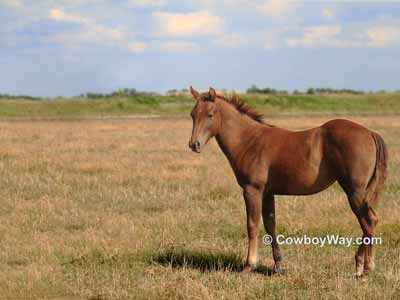
can become this:
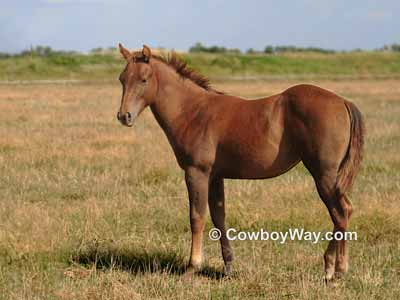
Cloning
Cloning - Cloning is where one area of a photo is reproduced (or "cloned") over the top of another area.
For example, with cloning, this......
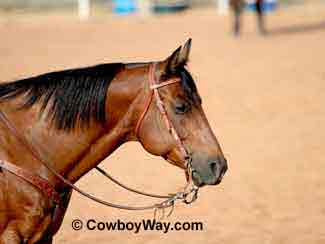
......can become this:
The cluttered background above the horse's head is gone. Dirt from other parts of the arena was cloned over the top of the clutter.
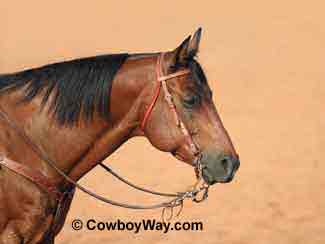
How To...
… Care For Your Felt Cowboy Hat
… Care For Your Saddle Pad Or Blanket
… Close A Gate With A Chain Latch
… Estimate Cattle Age By Their Teeth
… Fishtail Braid Your Horse's Tail
… Make A Bridle Rack Out Of Tin Cans
… Make A Collapsible Wood Saddle Rack
… Make A Flag Boot Out Of A Horn
… Make Homemade Hoof Conditioner
… Make Homemade Horse Fly Spray
… Measure A Western Saddle Seat
… Put A Horn Knot On Your Rope
… Put A Speed Burner On A Honda
… Recognize Common Horse Colors
… Recognize Common Horse Face Markings
… Stop A Saddle From Squeaking
… Tell A Boy Cow From A Girl Cow
… Tell A Horse Skull From A Cow Skull
… Tie A Stopper Knot
Tie a stopper knot for the end of a rope, or a metal, rawhide, or plastic honda
… Tie A Stopper Knot For A Honda
Tie a stopper knot for a tied honda
… Understand Leather / Hide Thickness
… Weigh A Horse and Optimize Rider Weight
… Wrap A Saddle Horn With Rubber
You Might Also Like...


